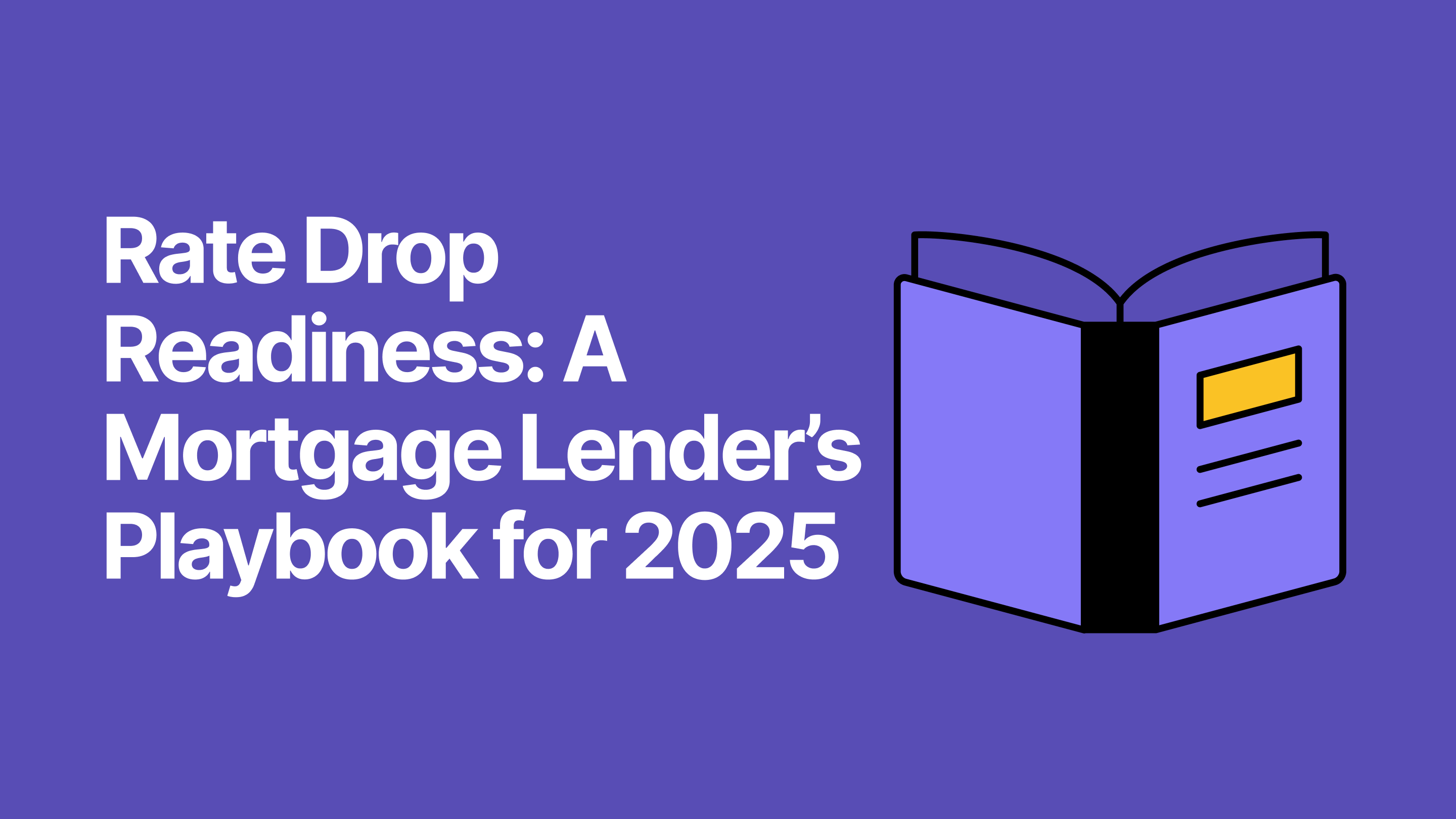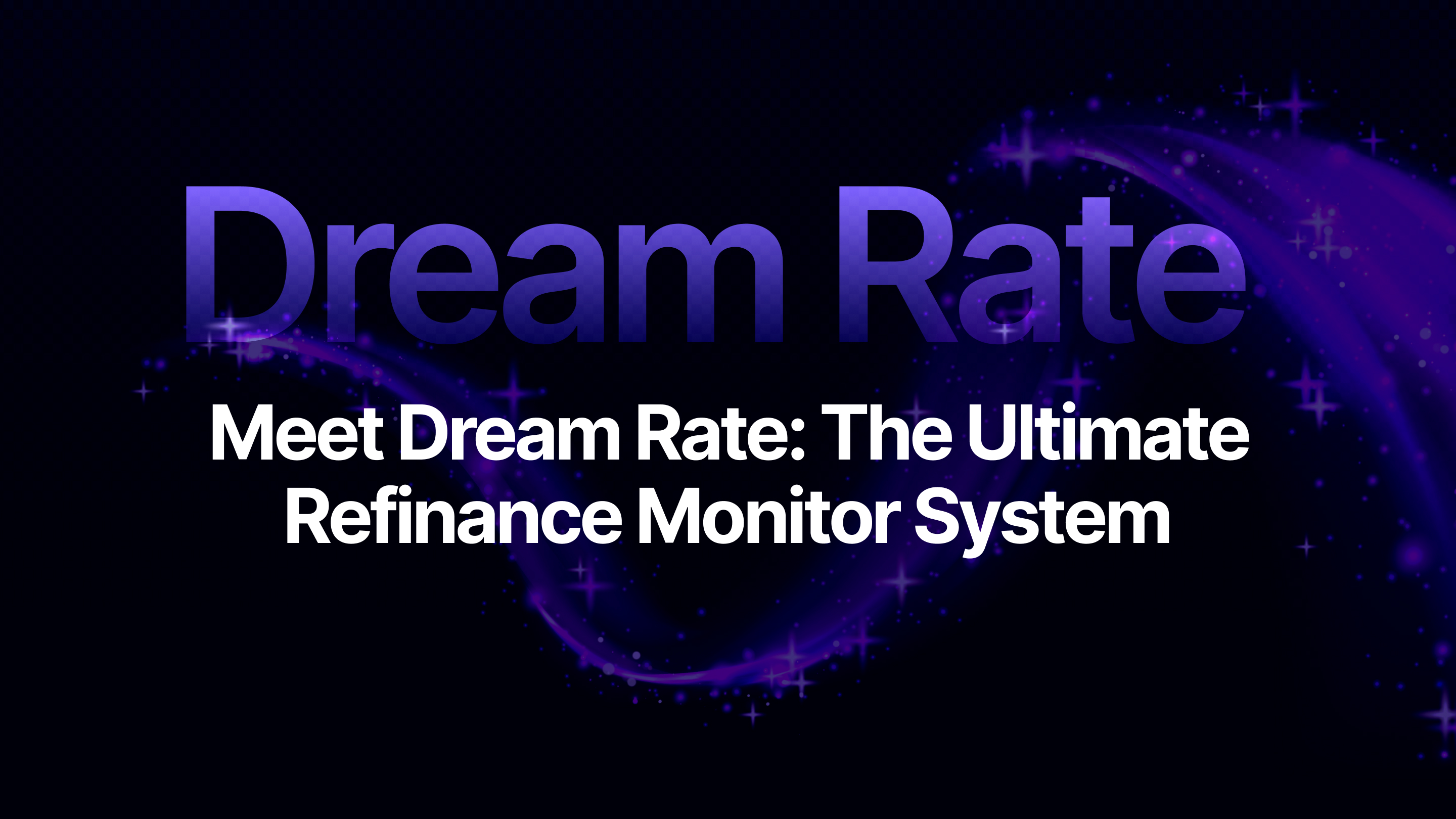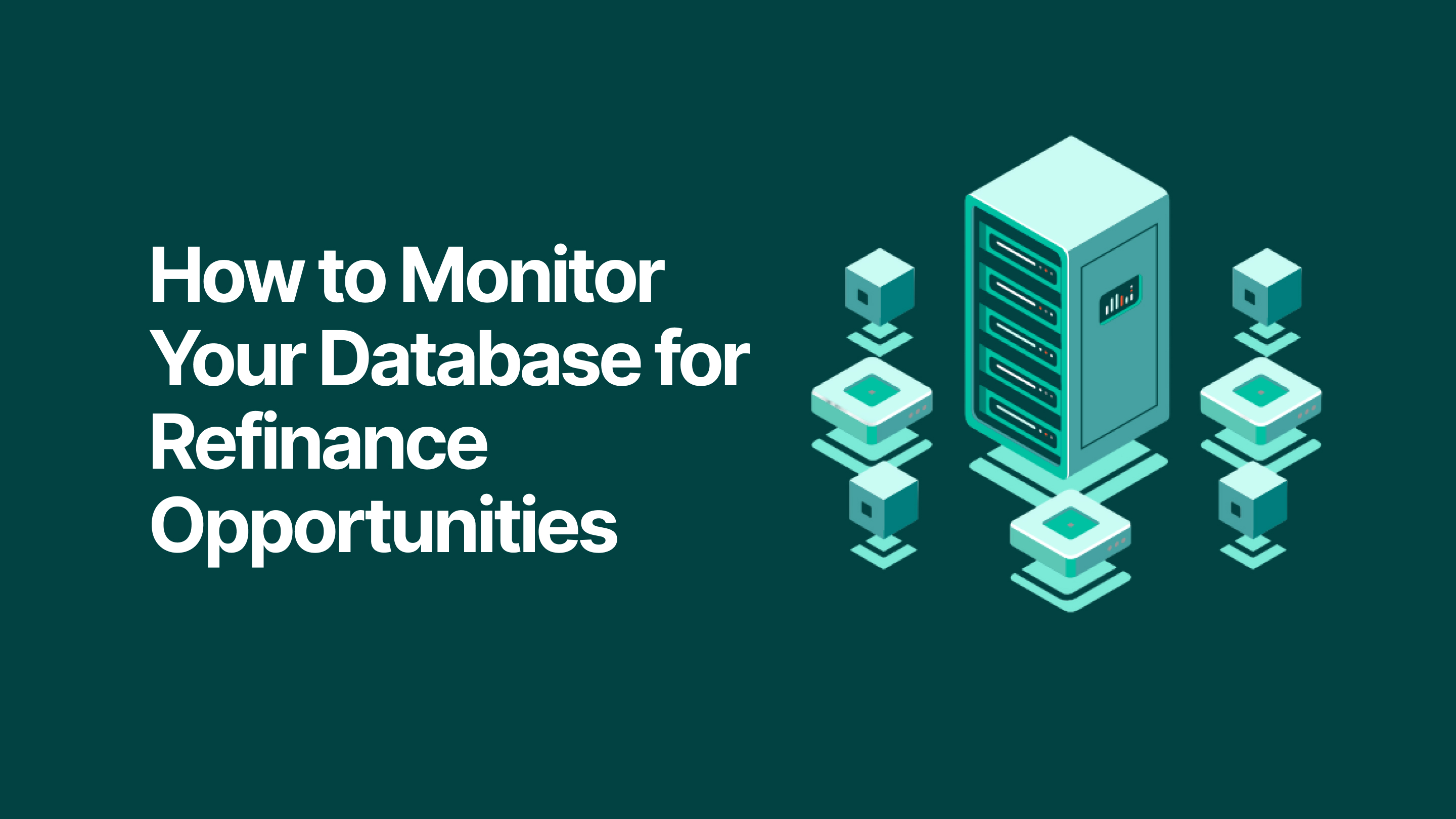It’s the moment we’ve all been waiting for. The Fed finally cut rates, and experts agree that more slashes are likely coming. Since mortgage rates tend to follow the federal funds rate, plenty of potential homebuyers and refinancers are waiting with bated breath.
It’s not just the Federal Reserve, either. Mortgage rates were already on a somewhat steady decline that started in May. If they keep trending downward, they should hit the sub-6% mark. That’s notable because many would-be borrowers have pinned that benchmark as their catalyst for action.
If you’re in the mortgage lending game, that’s probably music to your ears. Lower rates won’t just incentivize homebuyers. They should welcome people interested in a refinance back to the table — good news after the recent plunge in refis we’ve been seeing.
Is your mortgage lending institution ready for the opportunity? To help you grab a sizable share of the likely uptick in newly originated loans, we’ve developed this playbook for you. Follow these steps to optimize rate drop readiness for your mortgage lending team.
Step 1: Establish a strong digital foundation
Ideally, a rate drop means more leads coming to your team. To best serve them — and convert them into closed loans — your team needs speed and agility. The right technology helps you unlock that.
You want to lay the foundation your team needs to move quickly, delivering personalized loan recommendations alongside stellar service. In 2025, that’s a whole lot easier to do if they have strong software in place in the following areas:
- Product pricing engine (PPE): First and foremost, you need a way to connect your loan officers to the latest rates. A good PPE lets them access real-time rate data, then seamlessly price a variety of loan scenarios for each individual customer. Better yet, the best PPEs available today connect directly with your CRM and leverage AI to build in rules and make recommendations. A PPE your team trusts that integrates with the rest of your tech stack is the cornerstone of any modern mortgage lender’s operations.
- Customer relationship management (CRM) platform: A PPE is paramount, but a solid CRM is no less important. The right solution here makes it easy for loan officers to track key data about each lead, from their contact information to their last communication with that person. What’s more, a good CRM can tee up and nudge next steps. It might send a ping to a loan officer reminding them to follow up with a lead about their half-finished loan application, for example. Leading mortgage CRMs integrate with your PPE, loan origination system (LOS), and your marketing tools to provide a centralized source of truth for your loan officers.
- Lead-facing tools: Your PPE and CRM are core internal tools, but you can also deploy some to directly service leads, helping nurture them. Whether you guide people there through your own site or a lead source provider, the right lead workflow captures pertinent information from them. That then helps your loan officers pair them with the right recommendations for their specific wants and needs. Similarly, featuring mortgage calculators on your site allows leads to crunch the numbers themselves. When done well, this helps them feel empowered while putting a personalized quote just a click away.
As rates come down, your team is likely to get increasingly busy. There’s no time like the present to tackle your tech stack. If you’re currently operating with a lackluster PPE, hard-to-use CRM, or subpar (or nonexistent) lead-facing resources, it’s a good time to make a change.
Step 2: Get the word out
As rates come down, you can encourage potential borrowers to act on them. There are a couple of powerful areas to tap to remind them that now could be a good time to act:
- Rate tables on your website: Your website is a core piece of your marketing portfolio, and it’s a prime spot for showcasing the latest rates. With a rate table on your site, you can be the source for information when borrowers set out to find out what’s going on. In 2025, your rate table can connect directly with your PPE. This way, the information on your website stays continually up-to-date. And your team doesn’t have to do anything to make that happen.
- Rate alert emails: If people aren’t actively house hunting, they might only have a general sense that rates are coming down. By delivering the latest rate data straight to their inbox, you turn that vague awareness into solid information. Better still, when the email offers an easy way for them to get a personalized rate quote, it helps to encourage next steps.
These are just a couple of ideas. Your team might also find success posting rate alerts on social media or texting them to leads. Play around with your marketing mix to find what yields the best return for your lending institution.
Step 3: Set your team up for success
The right support can help your loan officers best manage the increased volume that should come with dropping rates. Specifically, we recommend:
- AI texting: People expect near-instantaneous responses when they reach out to companies. That puts a huge burden on your loan officers, but you can tap AI to shift it. With AI texting, leads get automated but personalized responses as soon as they request more information. The AI chatbot can communicate with them, figuring out what they need. And when that lead is ready to speak with a real person, the chatbot can seamlessly transfer them to a member of your team. Plus, texts have an average open rate of a whopping 98%. That makes SMS a highly effective channel for early-stage communications.
- Loan officer pages: Offer standalone pages for each of your loan officers, complete with contact information and an “Apply Now” button. This way, they can simply send people a link with their personal page. These pages function like digital business cards, but with the added benefit of easy next steps leads can take when they’re ready.
With these resources and processes in place, you position your mortgage lending company to strike while the iron is hot. Act now — before the Fed’s late October meeting, which should drive rates down even further.
We can help. We offer support connecting your PPE to rate tables, setting up rate alert emails, getting started with AI texting, and more. Get rate drop-ready by booking a demo with our team today.
















